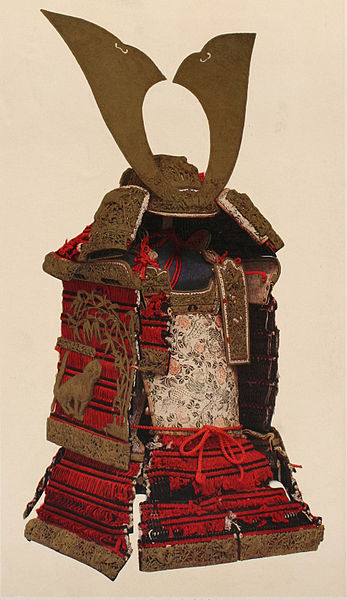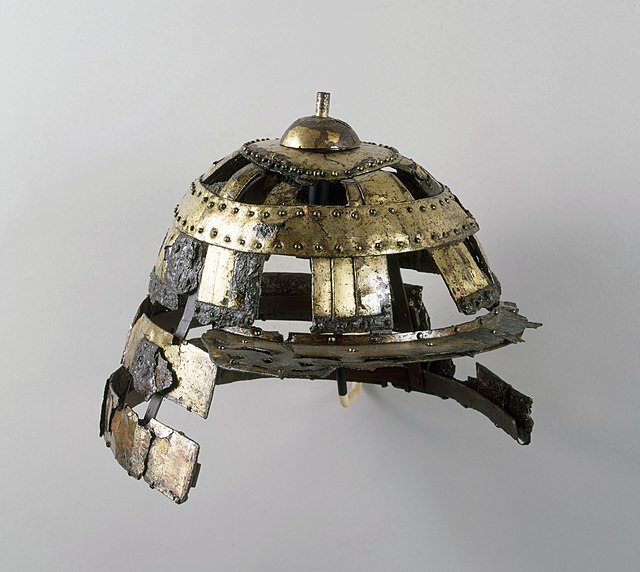Scholars agree that Japanese armour first appeared in the 4th century, with the discovery of the cuirass and basic helmets in graves. During the Heian period (794-1185), the unique Japanese samurai armour ō-yoroi and dō-maru appeared. The Japanese cuirass evolved into the more familiar style of body armour worn by the samurai known as the dou or dō, with the use of leather straps (nerigawa), and lacquer for weatherproofing. Leather and/or iron scales were also used to construct samurai armours, with leather and eventually silk lace used to connect the individual scales (kozane) of these cuirasses.
Ō-yoroi, Kamakura period, 13th-14th century, National Treasure, Kasuga Grand Shrine.
Dō-maru, Muromachi period, 15th century, Important Cultural Property, Tokyo National Museum
Gusoku Armour from the Kii Tokugawa Family. Edo period, 17th century. Minneapolis Institute of Art. In 2009, it sold for $602,500, the highest bid in Christie's history for a Japanese armour.
Gusoku Armour with a medieval revival style. Cloud dragon is drawn using maki-e technique. Edo period, 19th century, Tokyo Fuji Art Museum
Samurai were the hereditary military nobility and officer caste of medieval and early-modern Japan from the late 12th century until their abolition in the late 1870s during the Meiji era. They were the well-paid retainers of the daimyo, the great feudal landholders. They had high prestige and special privileges.
A samurai in his armour in the 1860s. Hand-colored photograph by Felice Beato
A Kofun period helmet, gilt copper, 5th century, Ise Province
In the noh drama Sanjō Kokaji, the 10th-century blacksmith Munechika, aided by a kitsune (fox spirit), forges the tachi (samurai sword) Ko-Gitsune Maru.
Taira no Masakado attacking an opponent on horseback (Yoshitoshi)








